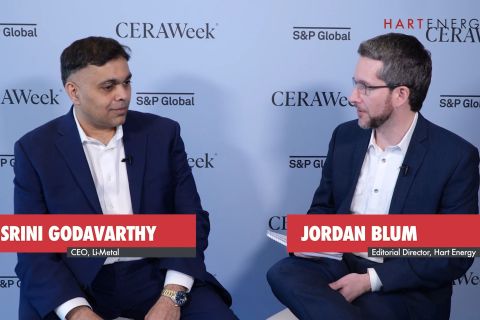Shale gas explorer Tamboran Resources is set to debut on the Australian bourse on June 30 in the country's biggest oil and gas float in a decade, pitching itself as a growth story despite the world's push toward greener energy.
Tamboran owns assets in the Beetaloo shale sub-basin in the Northern Territory, considered comparable to the prolific Marcellus Shale, the biggest U.S. natural gas field. It aims to start producing in 2025.
"If they can get the flow rates that are needed to be economic, the Beetaloo could have quite a big impact on the Australian gas industry," Daniel Toleman, an analyst at consultants Wood Mackenzie, said.
The Australian government, eager to see the remote basin developed, has committed AU$224 million to improve roads and spur drilling there.
Beetaloo exploration was halted in 2016 when the Northern Territory banned hydraulic fracturing, also known as fracking. It lifted the ban in 2018.
A lack of infrastructure makes Beetaloo development challenging. The roads are so bad that during the wet season, trucks can't enter. Tamboran is bringing sand from 2,000 km (1,200 miles) away in South Australia for fracking.
"It's going to require billions of dollars to develop the Beetaloo. There's a question where the appetite for that level of development capital is going to come," said Credit Suisse analyst Saul Kavonic.
Tamboran raised more than AU$60 million (US$45 million), just above the low end of its target range, but that was cut from an initial target of A$80 million, Managing Director Joel Riddle said.
At the offer price of AU$0.40 a share, the company will have a market value of about AU$260 million when it lists on June 30.
The funds raised will be used to drill three wells in the next 12 months, including two with Santos Ltd., in two assets estimated to have 31 trillion cubic feet of prospective resources, net to Tamboran.
Tamboran attracted institutional investors in Australia, the United States, Europe and Asia.
"A lot of the interest we're seeing is from institutional investors that have been part of the success story of the shale revolution in the U.S.," Riddle told Reuters.
Tamboran's Chairman Richard Stoneburner was a co-founder of U.S. shale developer Petrohawk, sold to BHP Group for $12 billion in 2011.
Marketing for the float coincided with an International Energy Agency call in May for no new hydrocarbon investments to meet global carbon targets.
Fielding investors' climate concerns, Riddle pitched Tamboran as a "net zero" producer. Beetaloo gas has CO2 content of just 3%, which the company plans to offset using renewable energy, carbon credits, and carbon capture.
"As long as you have a real strategy for mitigating your CO2 footprint, I actually think it could be a pretty strong story," said Regal Funds Management analyst James Hood. He declined to say whether Regal bought Tamboran shares.
Tamboran aims to sell its gas in Australia and to Asia.
It hopes to raise more money based on drilling results in late 2022 by selling stakes in its assets, ideally to major companies with interests in LNG plants in Darwin or Queensland.
"We're already getting lots of interest from the likes of Inpex and Total and a few other parties on the east coast," Riddle said.
Inpex Corp. and TotalEnergies had no comment.
($1 = 1.3263 Australian dollars)
Recommended Reading
Energy Transition in Motion (Week of April 19, 2024)
2024-04-19 - Here is a look at some of this week’s renewable energy news, including the latest on global solar sector funding and M&A.
Eversource to Sell Sunrise Wind Stake to Ørsted
2024-04-19 - Eversource Energy said it will provide service to Ørsted and remain contracted to lead the onshore construction of Sunrise following the closing of the transaction.
Exclusive: Building Battery Value Chain is "Vital" to Energy Transition
2024-04-18 - Srini Godavarthy, the CEO of Li-Metal, breaks down the importance of scaling up battery production in North America and the traditional process of producing lithium anodes, in this Hart Energy Exclusive interview.
High Interest Rates a Headwind for the Energy Transition
2024-04-18 - Persistent high interest rates will make transitioning to a net zero global economy much harder and more costly, according to Wood Mackenzie Head of Economics Peter Martin.
Scotland Ditches 2030 Climate Target to Cut Emissions by 75%
2024-04-18 - Scotland was constrained by cuts to the capital funding it receives from the British government and an overall weakening of climate ambition by British Prime Minister Rishi Sunak, said Mairi McAllan, the net zero secretary for Scotland's devolved government.




